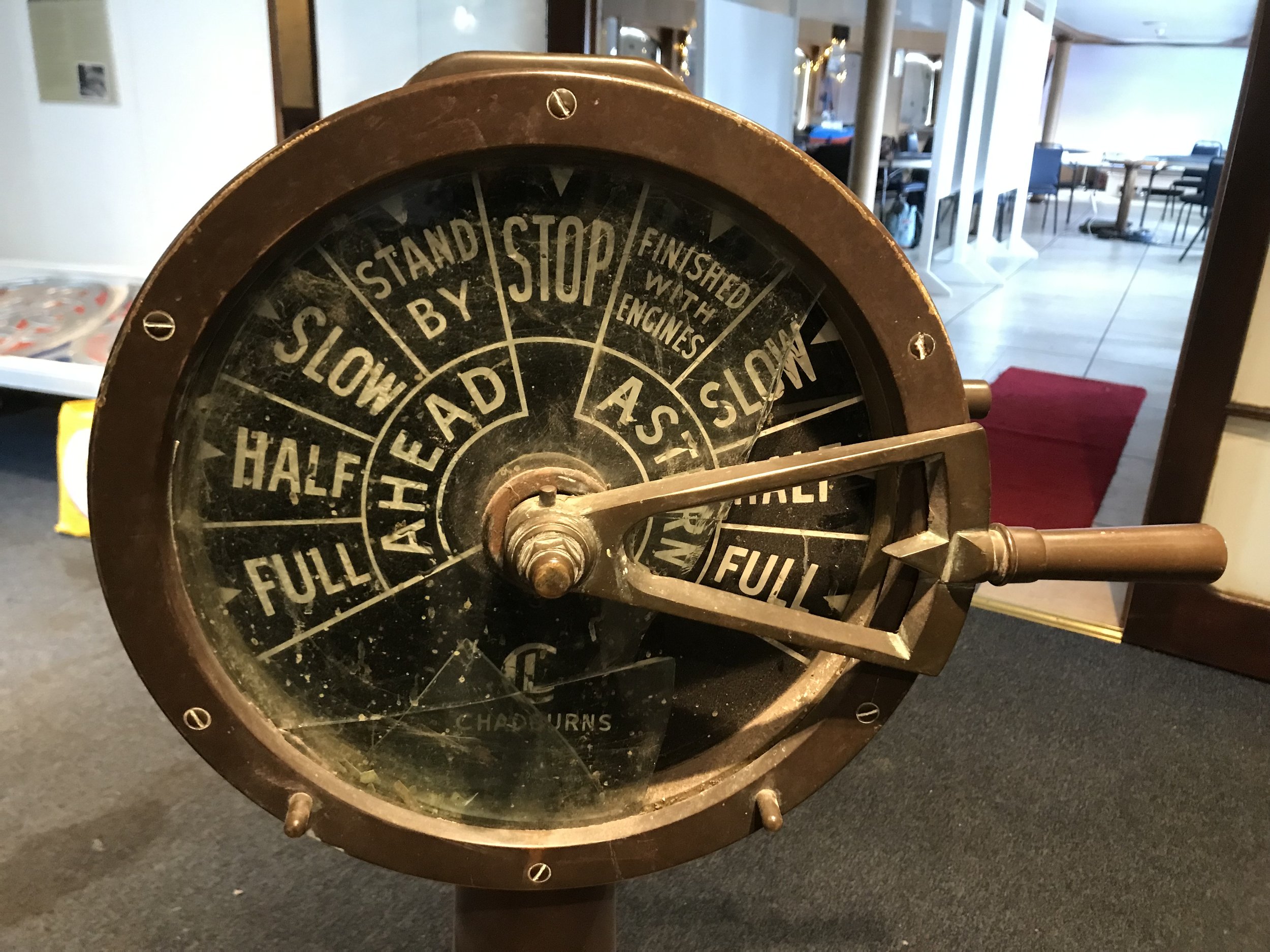Onsite training at the Maid of the Loch!
Toward the end of March I took a trip out to Balloch to visit the Maid of the Loch, where I was lucky enough to join several of the staff and volunteers from Go Industrial sites across Scotland in a large object conservation training course. The course was taught by Jim Mitchell, an accredited conservator who has been working on industrial collections since 1991, with previous projects including the William Wallace statue at the Wallace Monument in Stirling, and the Ross Fountain in West Princes Street Gardens in Edinburgh.
During the three day course Jim took us through a variety of conservation techniques, covered health & safety considerations, and discussed the ethics behind working with large objects in collections. We were also treated to a tour of the Maid, and Jim went into great detail on the current restoration works currently being undertaken on the ship.
During the tour we visited the winch house, which is the only working Steam Winch House in the Northern hemisphere, and is home to the still operational steam boiler (see images below). The boiler was used to slip the ship up onto the steam slipway in 2021 following the construction of a new carriage, where it has since undergone survey to assess the extent of work needed to repair the hull. Jim talked us through the maintenance needed to keep the steam engine in working order, all overseen by their beaver mascot (below right!), and we were given a demonstration on how to measure the clearance of a bearing using a lead wire (below left).
A large portion of our time on the Maid however was dedicated to some hands on conservation, and we were lucky enough to work with some of the objects from the collection at the Maid, including two chain operated, engine order telegraphs (see below). These telegraphs, which were made in 1952 by Chadburns in Liverpool, were originally stationed on the bridge, and would have been used as communications devices for the pilot to signal to the engineers in the engine room what speed to power the ship at.
The glass dials on both of the telegraphs had been shattered, and the brass casings were extremely tarnished, so we set about removing the handle and the dial face in order to safely remove the broken glass; we then gave the brass and interior mechanisms a good clean with wire brushes and WD40. With Jim on hand to offer advice, this part of the training was so invaluable, as it really highlighted the difference in approach for large object conservation in industrial collections. It was also extremely satisfying to work on these telegraphs, knowing that they will be reinstalled on the Maid once repairs to the ship have been completed and she is ready to go back into the water!
Over the course of these three days I also had the opportunity to talk further with programme manager Charli Summers about the restoration works at the Maid, and she introduced me to some of the volunteers who are currently working on the paddle wheel assembly for the ship. Since our time was limited, and I was keen to learn more, Charli was kind enough to arrange for me to return to the ship after the course had finished, so a couple of weeks ago I headed back to Balloch for a full day of work with the volunteers!
I spent the day working with volunteer Robert Cudahy, a retired engineer whose expertise are currently being put to good use fitting the new steel pins into the ‘lazy brackets’ for the ships paddle wheel assembly. Robert explained the importance of having the new pins fitted correctly to the original brackets, since they will be submerged under the Loch once the ship is afloat, and talked me through the fitting process.
First a grinding paste and lubricating oil is applied to the pin; this is then inserted into the socket and rotated several times to abrade away any high points on the pin, with the goal of achieving a close contact fit between the pin and socket (see video below!). The fit is then tested by applying Micrometer Engineers Marking Paste to the pin, reinserting it into the socket, and measuring how much of the marking paste is transferred to the interior surfaces of the socket.
The paddle wheel assembly is a complicated feat of engineering, which I am still struggling to understand! The central portion of the wheel is affectionately dubbed the ‘Jenny Nettles’ by the volunteers (which is a Scottish vernacular name for a ‘daddy long legs’), likely due to the fact that there are eight bracket locations on each wheel. The brackets (middle image below) are made of a series of cast iron arms and fixtures held together with the newly fitted steel pins, which will eventually be attached to either end of the new wooden paddles before being secured to the ‘Jenny Nettles’. Therefore, the fit of the pins needs to be tested not only because the brackets will be submerged, but also to ensure that the the paddles enter the water at the correct angle.
I learnt so much from my time at the Maid, and hopefully I’ll be able to head back out to Balloch a number of times of the course of the next year to see how the renovations take shape!
In the meantime, if you would like to find out more about the exciting renovations happening at the Maid of the Loch, follow this link - Maid of the Loch













